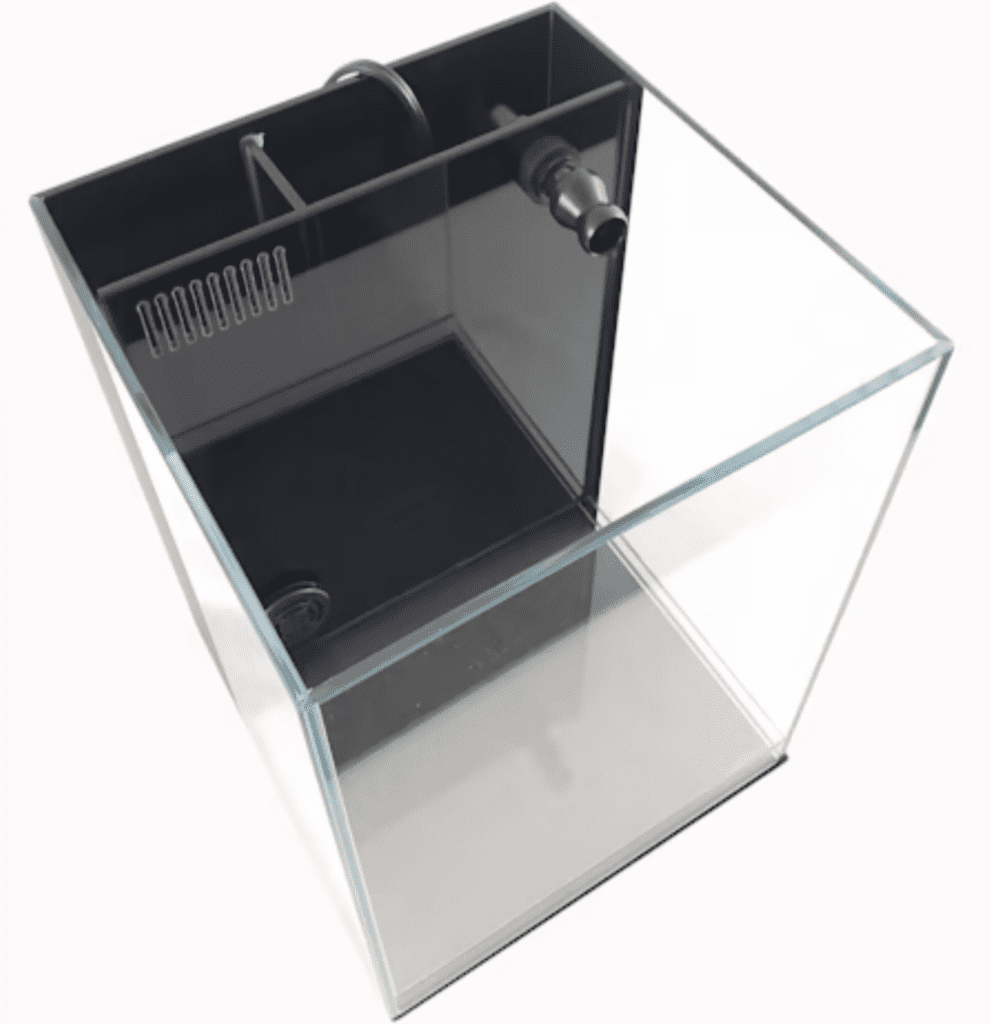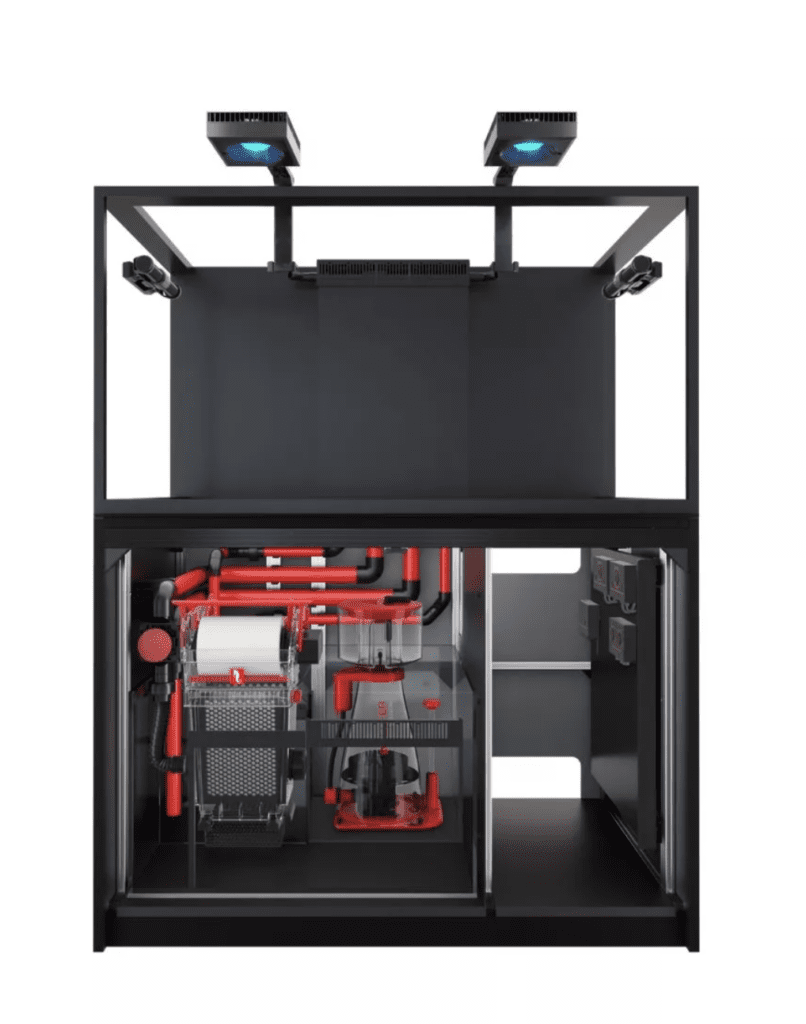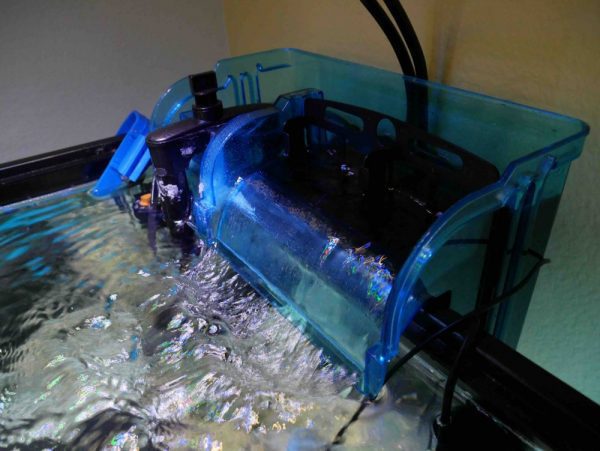At our saltwater fish store, Artistic Oceans in Las Vegasm we are always getting questions about Aquariums. We have covered what aquariums Las Vegas residents are buying most and how to chose size etc… but lets talk about some of the differences in aquariums and why they may or may not be a better choice for you.
All-in-One Aquariums

All in one aquariums in Las Vegas are very popular. They are the simplest of all aquariums and usually some of the most cost effective.
An All-in-one or AIO aquarium has both the tank and filtration section in one compact footprint. As you can see in the photo above, the display area of the tank is separated by a piece of black glass or acrylic, which houses the return pump, filters and media.
These tanks are amazing for beginners and experienced reefers alike because of their simplicity, ease of use and cost. They also have lots of capabilities of being put on counter tops, cabinets or other areas as it doesn’t need space below the tank.
The con’s are that the tanks are usually smaller, capping out at about 65 gallons. They also limit you on equipment since you have no dedicated sump. The lack of a sump means less water volume overall which leads to less water parameter stability. But the pros usually outweigh the cons for most people.
Discreet display and dedicated sump aquariums

These are by far the most common aquarium types for saltwater fish and reef tanks. The tank above is a Red Sea Reefer MAX S-550 G2+. You can see the dedicated sump on the bottom left of the cabinet.
As far as Las Vegas Aquariums for Sale, these are the most common you will see in stores, used or even online when you search.
There are many pro’s. There are hundreds of brands, sizes and footprints so you will always find one right for you. The extra water in the sump makes any size tank more stable. The sump gives you ample room for extra reactors, skimmers, or media. There is much more customizing ability when it comes to the layout and design of your tank.
The con’s are pretty obvious. They take up more space. That sump has to go somewhere, and gravity dictates it needs to be somewhere below it. Also cost is higher, a sump is basically a 2nd tank.. that costs money. The bigger equipment, the need for a stand… all adds to that cost.
Hang on the back filter
These are the cheapest, and simplest of all aquariums. They aren’t really aquariums themselves, but more ways to convert any cheap aquarium to a saltwater one. Nobody sells aquariums that are dedicated hang on the back systems, you buy the Hang on the back filter and add it to a glass tank of your choice.

These filters make a tank cheap and insanely easy to setup. There are alot of con’s and a few pro’s to these setups.
The con’s. The bioload these filters can handle is small.. you really need to watch how much livestock you put in your tank, keep up on testing and water changes. They are not attractive, there is no way to hide the device hanging on the side of your tank. They are louder than normal tanks since the water cascades into your tank. Very little room for media or filtration.
Pro’s. The pros are all the same.. Cheap cheap cheap. These work great for instant hospital tanks, quarantine tanks, and other temporary structures. We do not recommend these be used for a permanent tank.
Conclusion
In Las Vegas there are lots of aquariums for sale. Every size, shape and price point you can imagine. The good thing is that the variety is so large there is a tank setup that is right for everyone!



